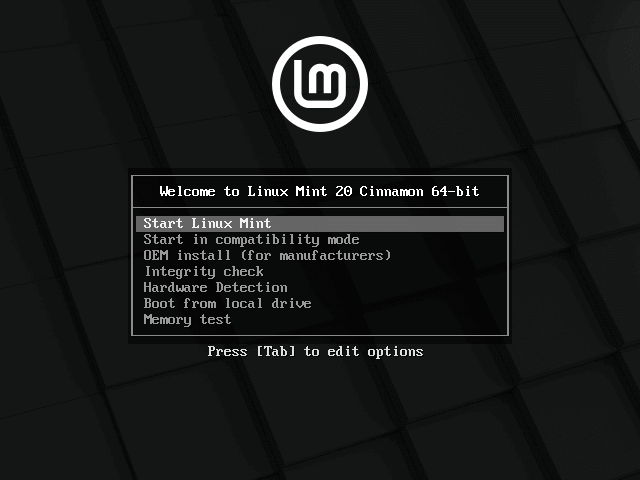

Nothing is being detected by GRUB, I don't know what else to do.Īlso, even though it says that the mount point of the sda's (the windows partitions) is in the mnt folder, whenever I mount them through the GUI manually, they show up in the media folder. I've also tried mounting the SSD and trying to detect it with os prober, I've even went on the "disks" app that is preinstalled to mount the efi as well. In the installation menu the SSD partitions did show up, the live boot recognised them, it just isn't detecting it now. Just to be clear: I installed Linux XFCE on a formatted HDD after having Windows 10 already installed on an SSD.

#Grub2 windows 10 linux mint full#
I've had the two dual-booted before but recently I had to reinstall my Linux Mint, so I did a full format of the HDD and installed it. I'm running a fresh installation of Linux Mint XFCE 20.2 on an HDD. I've tried going on the grub.d 40_custom file and editing it to include a boot option, specifying the windows efi partition, which my system is able to detect, and it didn't work. When you needs more help tell us in which mode UEFI or CSM is your windows installed.Running sudo grub-install /dev/sda1 does not work.
#Grub2 windows 10 linux mint install#
Or if you have a HiDPI screen, type this instead: apt install -reinstall -o Dpkg::Options:: '-force-confmiss' grub2-theme-mint-2k. So you can use it to get the defective boot repaired. You can make it look like this: To do so, open a terminal and type: apt install -reinstall -o Dpkg::Options:: '-force-confmiss' grub2-theme-mint. supergrub is able to boot any system that is installed. It is your choice to boot up the live system the right way (the same as windows is installed) to get the installer in the right direction.Ī good way to get boot up any system when the bootup seems unuseable is a very small USB stick with installed supergrub. For boot up up in UEFI mode grub has to be installed in the only UEFI boot partition in its own directory, If you be sure to select the right method you will select manually in BIOS what to boot.įor boot in CSM (msdos) mode grub has to be installed in MBR. The installation medium defines both - it is your choice to select either UEFI or CSM to define the way the system will bootup itself and configures the system to be installed. The way the bootup is done defines the Way the installer installs the system it installs. At the boot time, on the grub screen, if you do not choose Windows for login within 10 seconds (default Grub timeout), it boots up into the Linux. The GNU operating system uses GNU GRUB as its boot loader, as do most Linux distributions and the Solaris operating system on x86 systems, starting with the Solaris 10 1/06 release. When you install Ubuntu or Linux Mint or elementary OS along with Windows in dual boot mode, Linux becomes the default OS.

Windos boots up defailt in UEFI linux in comatibility Mode. What is grub mode in Linux GNU GRUB (short for GNU GRand Unified Bootloader, commonly referred to as GRUB) is a boot loader package from the GNU Project. Windows boot CD/stick and linux live system are both use very tricky both to boot either CSM (msdos) or UEFI boot to boot up themself. In all other cases you can use compatibility mode. I have faced both scenarios in my long journey with Linux and computers. It just kept booting into Windows 10 at each startup. The usual grub menu is nowhere on the scene. Or perhaps you had a working dual boot system but you updated Windows and now your system boots straight into Windows. an already installed windows is installed using UEFI You dual booted Ubuntu Linux with Windows but when you reboot, you do not see the Grub screen that allows you to choose between Windows and Linux. You needs to have a disk with partition type GPT if UEFI that based on GPT - General Partition Table - that contains a unlimited number of partitions wheras 1 defined partition contains the boot records of an unlimited number of bootable systems. Wheras track 0 lives unpartitioned while sector 0 of that track is defined as MBR, the Master Boot Record that contains the boot record of the installed OS or as trick a bootloader that selects the boot record of the OS to boot in multiple boot selection.Ģ. Wheras 1 of them can be an extended partition that is a container of logical drives wheras each of them emolates a single partition. It has a range of limits that makes it unuseable on any boot device bigger than 2 TB: That is the method a BIOS does since IBM foundet it. Since more than 10 years there are 3 different boot methods i1. Thee will no need to install grub after installation when the install was done right.


 0 kommentar(er)
0 kommentar(er)
